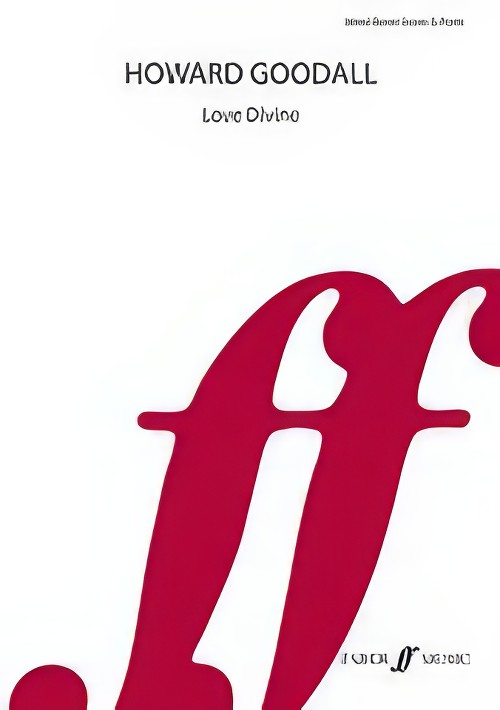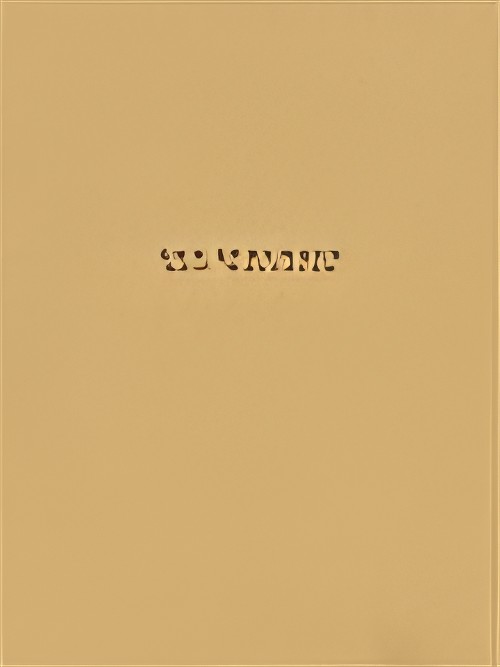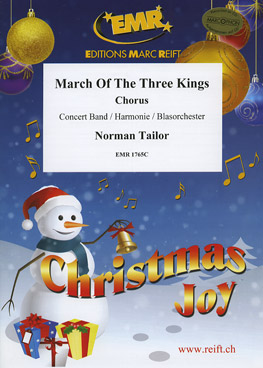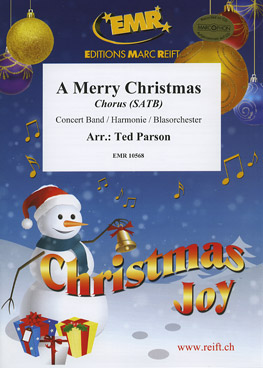Results
-
 £39.99
£39.99Love Divine (Concert Band - Score and Parts) - Goodall, Howard - Wheeler, Alastair
One of Howard Goodall's most popular choral settings, Love Divine has been skilfully arranged for wind band by Alastair Wheeler, with the approval of the composer. This version is based on the setting with piano and strings and can be performed as a self-standing concert work or as an accompaniment for performance by a large choir. Duration: 8 minutes.
Estimated dispatch 7-14 working days
-
 £118.99
£118.99LUX AURUMQUE (Light of Gold) (Concert Band Set) - Whitacre, Eric
Score and Parts. Commissioned by the Texas Music Educators Association for their 2005 All-State Band, Lux Aurumque is an extraordinarily lush and poignant adaptation of one of Eric Whitacre's most popular choral works. Gorgeous, simple triads melt from one beautiful chord to the next, creating a slowly evolving wash of colours and light. Elegantly orchestrated by the composer, Lux Aurumque is a profoundly moving experience for players and audiences alike. American Grade 4. Duration: 5:30
Estimated dispatch 7-14 working days
-
 £100.00
£100.00MARCH OF THE THREE KINGS (SATB Chorus with Intermediate Concert Band) - Tailor, Norman
Includes 20 copies of the choral part. Duration: 2:00
Estimated dispatch 7-14 working days
-
 £132.10
£132.10MERRY CHRISTMAS, A (SATB Chorus with Advanced Concert Band) - Parson, Ted
Includes 20 copies of the choral part. Duration: 3:00
Estimated dispatch 7-14 working days
-
£332.99
Missa Katharina Wind Band Set (Score & Parts)
Missa Katharina is a mass - comprising of the standard movementsKyrie, Gloria, Credo, Sanctus, Benedictus and Agnus Dei. In additionto this the composer has added additional instrumental movements- Prelude, Offertory, Postludium and the mass movements Alleluiaand Amen. Missa Katharina was primarily written for choir, sopranosolo and concert band but can also be performed with a choir,accompanied by an organ or piano only. If there is no good solosoprano voice available, the sopranos can also sing the sopranopart tutti, standing before the choir. A truly flexible work that willbe equally at home performed in the church or in the concert hall. Choral parts available separately. 0:35:00
Estimated dispatch 7-14 working days
-
£209.99
Missa Santa Cecilia (Concert Band - Score and Parts)
This Latin mass for choir and wind band was composed in honour of Saint Cecilia's feast day, Saint Cecilia being the patroness of musicians. For this reason, many ensembles have annual concerts dedicated to Saint Cecila, which was the inspiration for this piece. It is a festive, optimistic, but also comforting work, which in style perfectly suits the character of Saint Cecilia's Feast Day. After Missa Brevis, Missa Katharina and The Gospel Mass, Missa Santa Cecilia is the fourth published mass by the Dutch composer Jacob de Haan. Choral parts available separately. 0:19:04
Estimated dispatch 7-14 working days
-
 £7.99
£7.99New Christmas Praise (1st Trombone C BC)
Think of a Christmas tune or carol, and it's almost bound to be in this excellent collection of 115 Christmas arrangements. Contents are listed on the PDF. Specially arranged for brass or wind band (or a mixture of both.) A must for all bands intending to do some 'carolling'. The SATB Choral Editions Part 1 and 2 can be used as a score.
Estimated dispatch 7-14 working days
-
 £7.99
£7.99New Christmas Praise (2nd Trombone C BC)
Think of a Christmas tune or carol, and it's almost bound to be in this excellent collection of 115 Christmas arrangements. Contents are listed on the PDF. Specially arranged for brass or wind band (or a mixture of both.) A must for all bands intending to do some 'carolling'. The SATB Choral Editions Part 1 and 2 can be used as a score.
Estimated dispatch 7-14 working days
-
 £7.99
£7.99New Christmas Praise (Alto Bb)
Think of a Christmas tune or carol, and it's almost bound to be in this excellent collection of 115 Christmas arrangements. Contents are listed on the PDF. Specially arranged for brass or wind band (or a mixture of both.) A must for all bands intending to do some 'carolling'. The SATB Choral Editions Part 1 and 2 can be used as a score.
Estimated dispatch 7-14 working days
-
 £7.99
£7.99New Christmas Praise (Alto C)
Think of a Christmas tune or carol, and it's almost bound to be in this excellent collection of 115 Christmas arrangements. Contents are listed on the PDF. Specially arranged for brass or wind band (or a mixture of both.) A must for all bands intending to do some 'carolling'. The SATB Choral Editions Part 1 and 2 can be used as a score.
Estimated dispatch 7-14 working days
